Liveaboard Diving: What you Need to Know for Your First Trip
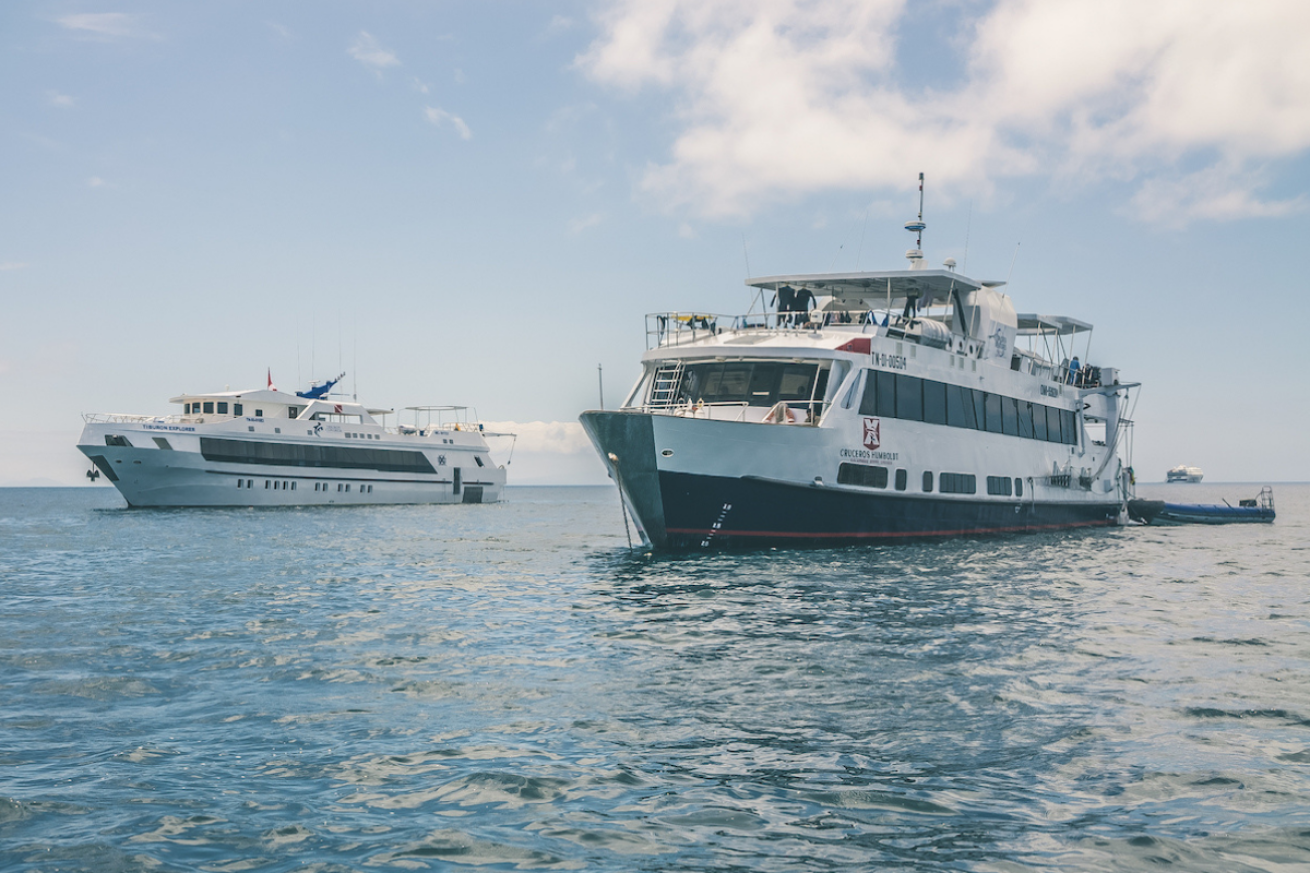
Photo Courtesy of Explorer Ventures FleetExplorer Ventures Fleet's liveaboards Humboldt Explorer & Tiburon Explorer.
Are you considering liveaboard diving?
Liveaboards offer everything you could ever need from a 5-star diving vacation. Plus, for newer divers, they are one of the best ways to take your experience to the next level. A typical seven-day trip includes 18-28 dives (depending on the itinerary), chef-prepared meals, modern accommodation, and superior diving services – all in one place. Most importantly, stepping aboard a ship allows you to access off-the-beaten-track dive sites in some of the most remote areas of the world, like the famous Darwin and Wolf Islands in Galapagos. Incredible diving locations only accessible by boat. Whether you’re an experienced diver who’s thinking of trying a liveaboard, or a beginner diver who wants to up their skill, this type of holiday offers something for everyone.
We asked Explorer Ventures Fleet about taking the leap to liveaboard life. After 34 years perfecting liveaboard diving vacations, they have the scoop on the pros and cons, packing, and more.
What can I expect from a liveaboard?
Most of our trips are 7 nights, 8 days, with special itineraries up to 10-12 days. While this may sound like a lot, the days fly by. There is plenty of time during your trip for diving, as well as relaxing and socializing. Most Caribbean liveaboards like the Turks & Caicos Explorer II offer up to five dives a day with a daily agenda that looks like this (with a few naps thrown in): Breakfast, dive #1, snack, dive #2, lunch, dive #3, snack, dive #4, dinner, and then the night dive, or evening socializing if you’d like to enjoy a drink with dinner.
Turks & Caicos Explorer II’s longtime dive instructor Jo summarizes liveaboard life perfectly: “If your hair is wet, you eat. If your hair is dry, you dive.”
At the same time, many guests don’t do all the dives offered. The beauty of a liveaboard is that if you don’t feel like diving at that moment, you’re not missing the boat – and another dive is just a snack or a nap away.
What diving qualifications do I need before I try a liveaboard?
Liveaboard itineraries vary greatly in requirements, but at minimum you will need to have your open water diver (or equivalent). However, if you lack extensive experience and want to be able to confidently embrace everything a liveaboard has to offer, you will have your advanced open water certification (or its equivalent). This allows access to deeper dive sites and night dives. Regardless of your experience or the last date you completed a dive, the divemaster will help you get reacquainted with the ocean on your first day. By the end of the week, you will be a well-oiled diving machine after accumulating many hours underwater.
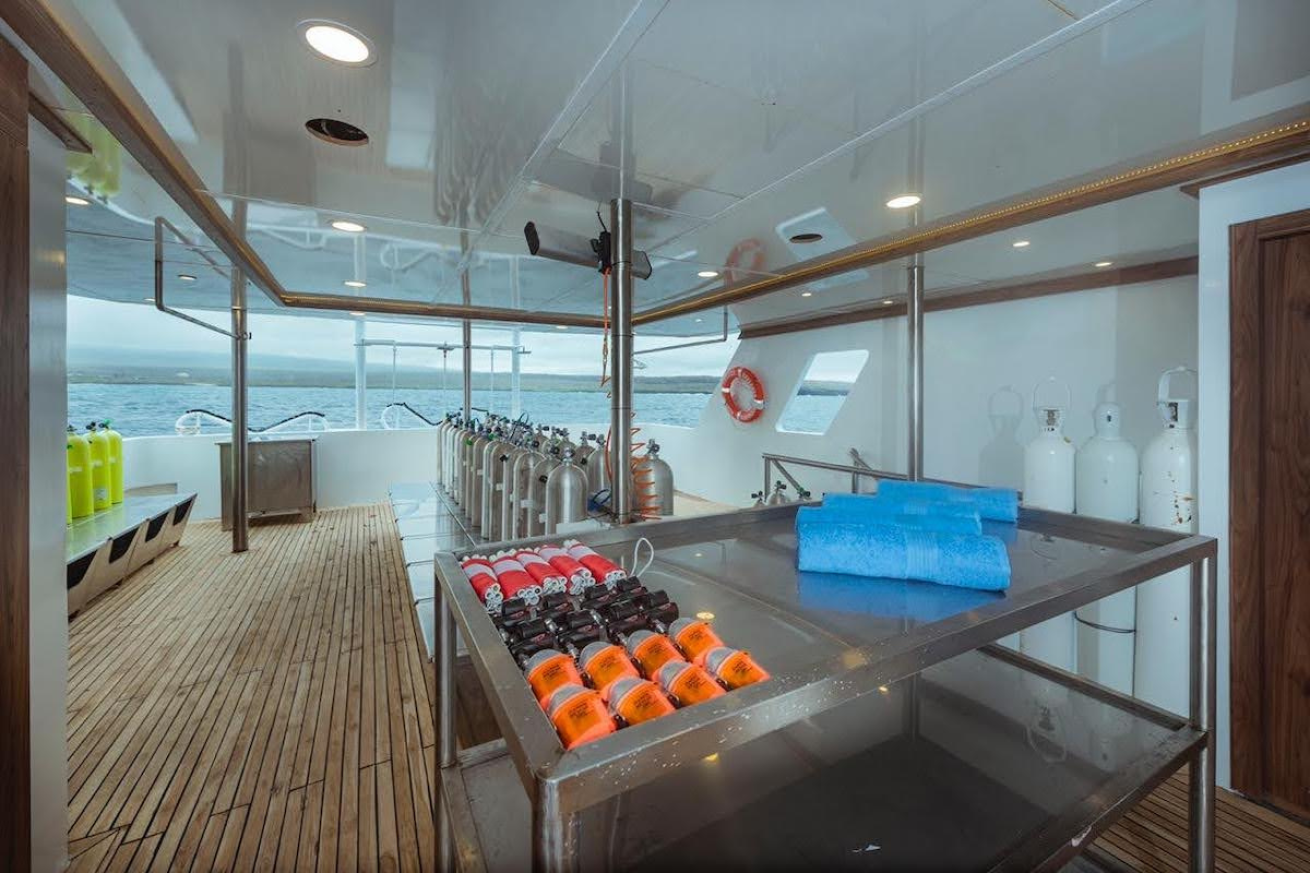
Photo Courtesy of Explorer Ventures FleetAn example of a typical liveaboard dive deck. The vessel provides tanks, weights, and safety equipment, with a full kit available onboard for rental.
Do you need to own gear before you book a trip?
Absolutely not. The vessel provides tanks, weights, and weight belts for your use, and a full kit is available on board for rental. If renting, we do suggest bringing your own dive computer, mask, and fins to ensure you’re comfortable during your week. However, these items are also available to rent. Depending on airline luggage costs and rules for scuba gear, guests sometime opt to leave their gear at home and pay for rentals as it can be cheaper. Here is an example gear rental list.
What courses are offered on a liveaboard?
Each vessel has a qualified instructor staff, however what courses are available depends on the dive itinerary and location. Typical offerings include advanced, nitrox, and specialty courses like deep, navigation, buoyancy, and fish identification. Connect with us and we can let you know what’s available before you book your trip.
What are some of the pros of liveaboard diving?
One of the biggest benefits of liveaboard diving is that you will be staying on an all-inclusive floating resort. This means comfortable accommodation, delectable meals, beer and wine (in most cases), dive shop services, a professional crew, and up to 5 dives a day are all included. There’s no need to pull out the wallet after each meal or dive. On most liveaboards you are also moored directly to the dive site, so there are no long boat rides, and your tank is filled right where you set it down. Some more perks include highly personalized service by crew, and night dives followed with warm towels and hot chocolate (a guest favorite). Here are 8 more reasons to try liveaboard diving!
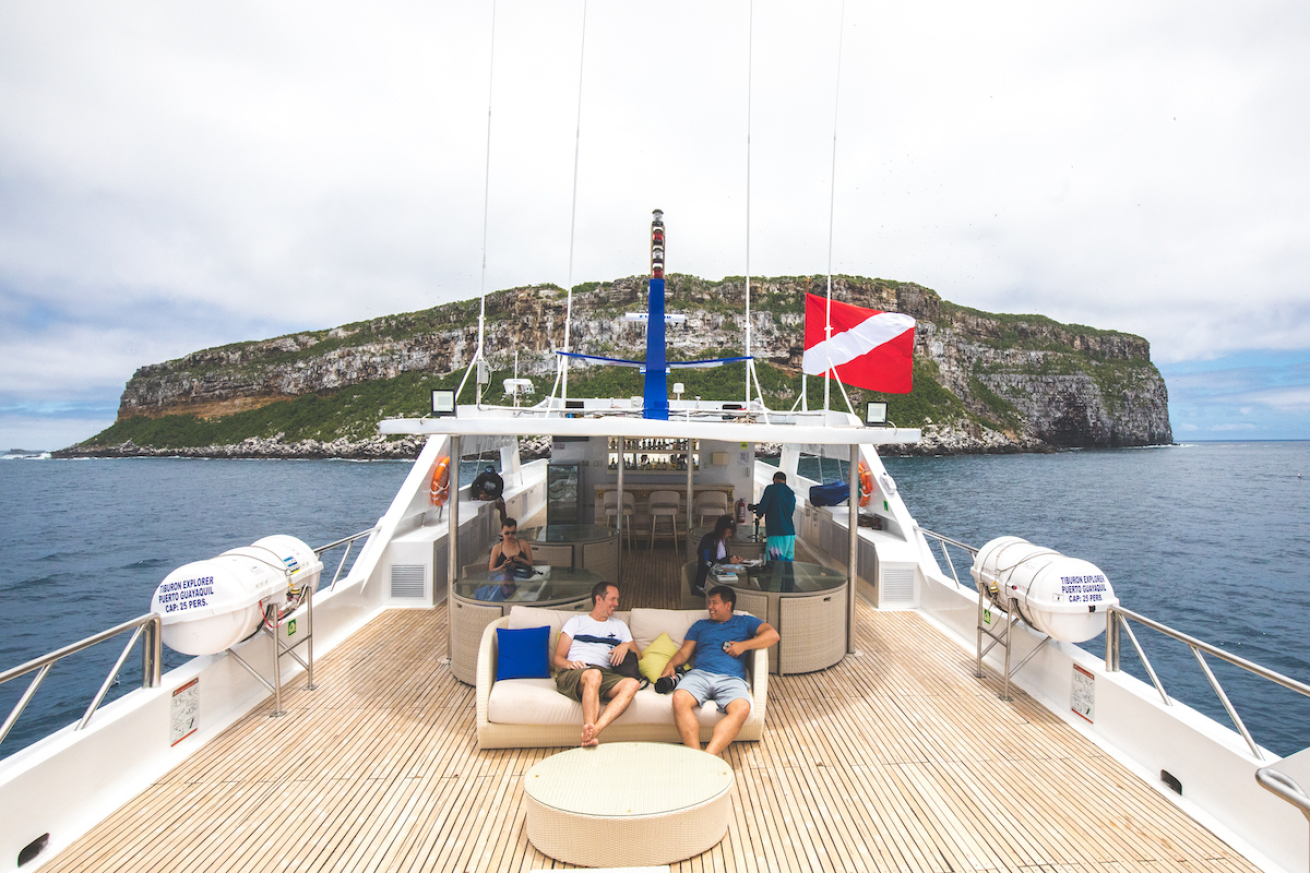
Photo Courtesy of Explorer Ventures FleetOne of the biggest benefits of a liveaboard is that the vessel is an all-inclusive floating resort.
What are some of the cons of liveaboard diving?
The cons of liveaboard diving could also be benefits since drawbacks are different for everyone. But, if connecting with your office daily or running five miles a day is important to you, you might consider it a disadvantage that you may not be able to do so while on a liveaboard. At first blush, the price of liveaboards may also seem like a con but once the cost is compared, apples to apples, to dive resort packages, it’s usually a good buy. More about this below.
Can I afford a liveaboard trip?
It's easy to find the right fit for your pocketbook. Liveaboard costs can range from budget to luxury, with the accommodation and trip style to match. Packages are maximized to include accommodation, meals, beverages, guides, dive shop services, and plenty of diving – which breaks down to be cheaper per day than an average land-based vacation in the same destination. Throughout the year there are discounts like our Year of Savings Specials and group deals which makes the trip more cost-effective for those with a tight budget.
What is not included in a liveaboard package?
This varies, as well, but not included in typical packages are flights, gear rentals, class instruction, Nitrox, crew gratuities (10-20% of the package price), dive and trip insurance, and local taxes like fuel surcharges and port fees. Most things that would also not be included in a typical resort stay.
What are the accommodations like on a liveaboard?
As a guest on one of our liveaboards, you will either stay in a shared or private stateroom. The cabin’s size and amenities will vary as each liveaboard has a different layout and bed configuration (king, queen, twin, etc). However, all have their own ensuite bathroom with shower, air-conditioning, and many have a port hole for ocean views. Rooms are quite comfortable and modern, including everything you need for your week on board. See an example here.
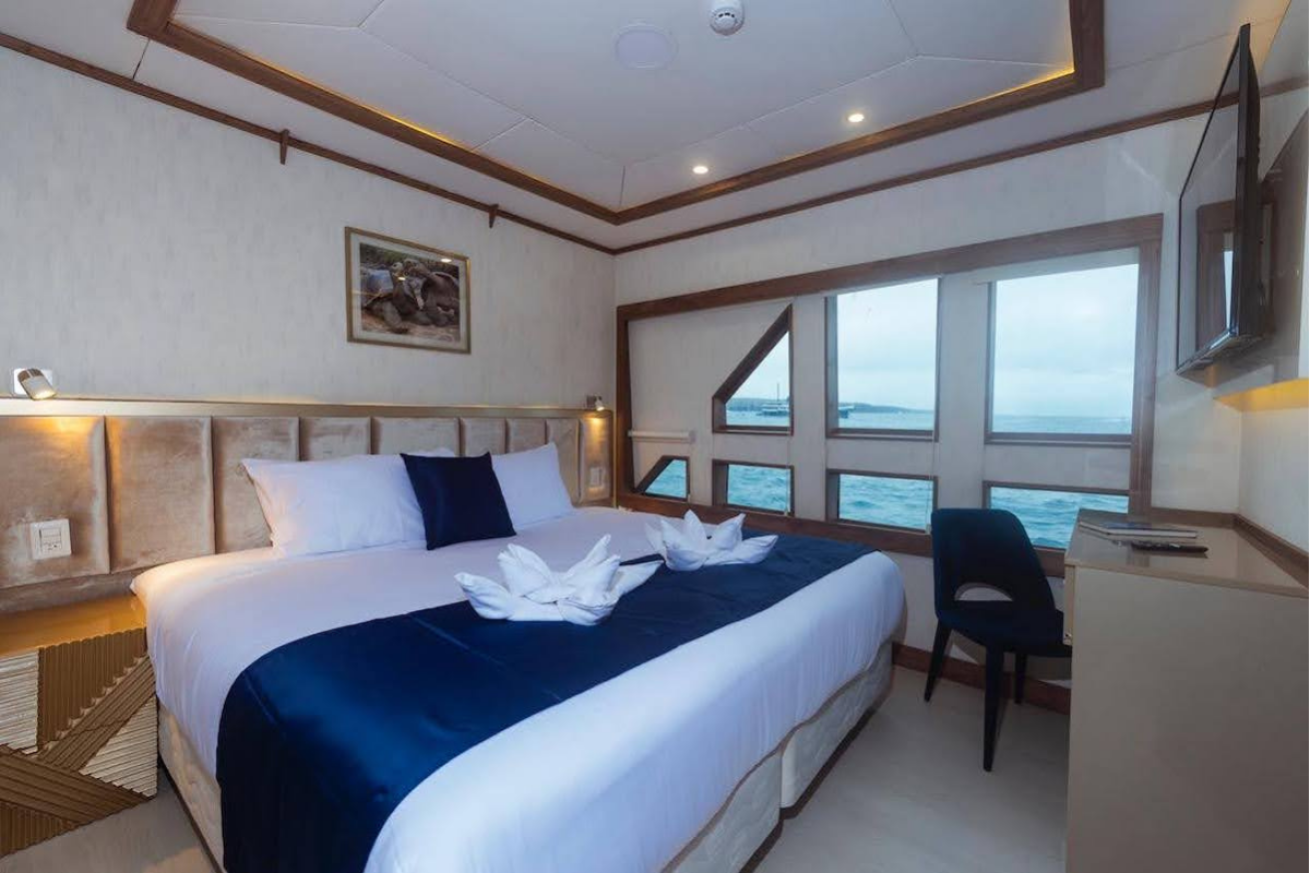
Photo Courtesy of Explorer Ventures FleetLiveaboard rooms are comfortable and modern, including everything you need for your week on board.
What would I need to pack?
Packing for a liveaboard trip is much easier than packing for a land-based vacation. Most tropical climates don’t require much more than shorts, T-shirts, and swimsuits (plus slacks, dress shorts or sundresses for dinner). You’ll be in your wetsuit most of the time anyway! Reef-safe sunscreen, sunglasses, and hat are recommended to pack. All linens (including sheets, comforters, bath towels, hand towels, dive towels, and wash cloths) are provided. If you are adding on a land tour to soak up the destination’s culture, you’ll also need to consider local traditions. For instance, Egypt has a more modest society, so consider bringing items like long sleeve shirts, long pants, and a lightweight shawl.
Lastly, pack your regulator, dive computer, mask, a swimsuit, change of clothes, necessary medications and toiletries in your carry-on bag. Having these few items with you will make an unexpected luggage delay far more bearable.
What will I eat?
On our vessels, evening meals usually consist of lots of fresh vegetables, rice, pasta, chicken, beef, turkey, pork, and fish. Breakfast rotates through a delicious fare of eggs, bacon, pancakes, French toast, pastries, and fresh fruits. Lunches vary from soup and sandwiches, burgers, pasta, assorted salads, and quiches. Homemade baked breads, cookies and brownies are always offered between dives. Chefs mix international favorites with local flare and can easily accommodate special dietary needs if you notify them before the trip.
Can I join a liveaboard solo?
Yes, liveaboards are a great place for solo travelers. Everyone that goes on a scuba cruise is like–minded and ready to dive. Making it easy to meet new dive buddies and forge lifelong friendships. As a solo traveler, however, you will be required to pay a single supplement to have your own room. Otherwise, you may end up sharing the cabin.
Am I safe on a liveaboard?
Just like a dive center, safety on our liveaboards is the top priority for the staff, captain, and crew. How this is reflected depends on each vessel, plus the requirements of the country. The pandemic has caused operators to continually reflect on their standard safety procedures and to add or revise policies to accommodate the new challenges. Like many diving businesses we have advanced our operations and remain atop all safety requirements, as indicated here.
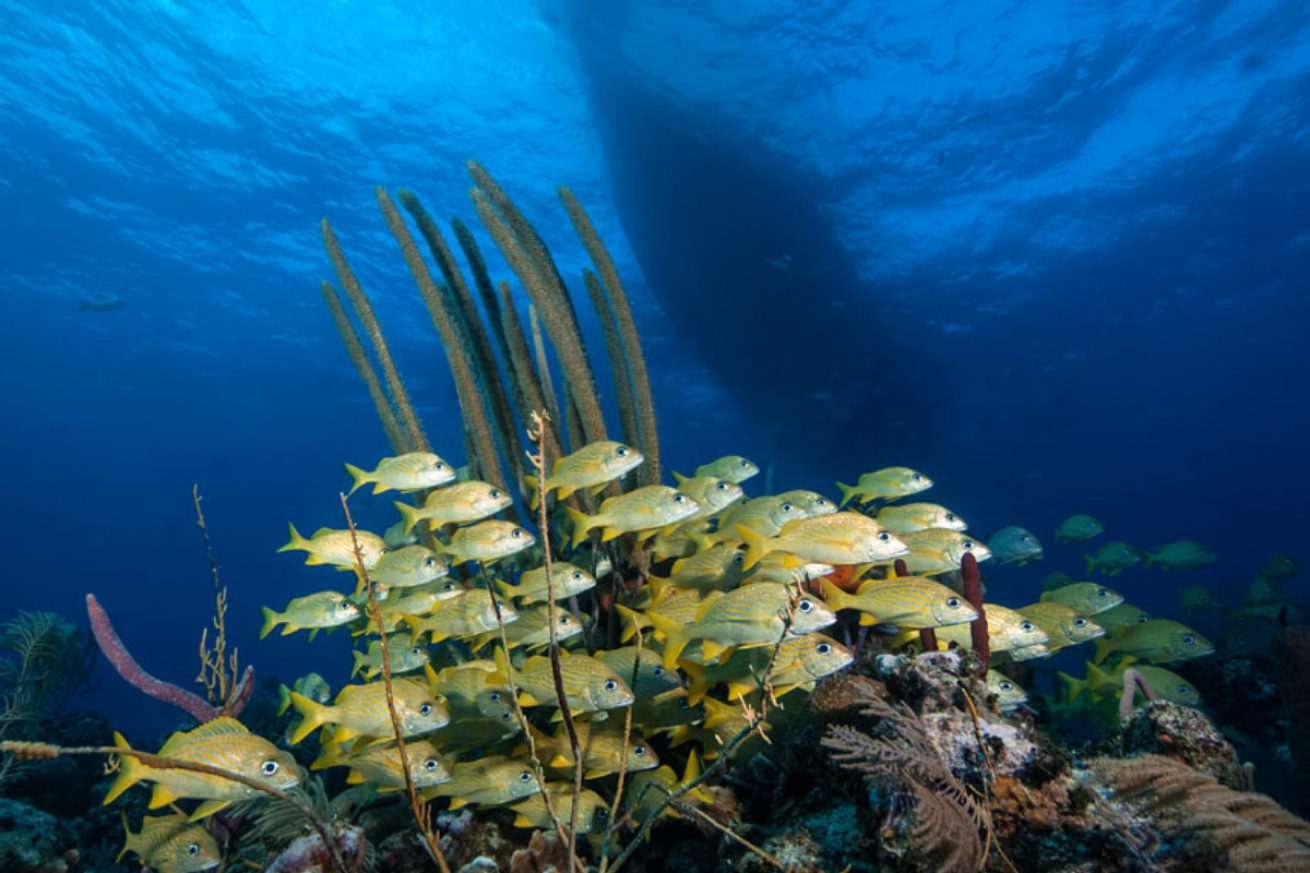
Photo Courtesy of Explorer Ventures FleetDiving from a liveaboard allows you to access off-the-beaten-track sites in some of the most remote areas of the world.
When is the best season for liveaboard diving?
Short answer – anytime! Long answer, that depends on where you are planning to dive and what you would like to see. Many destinations have seasonal variations in weather, marine life, pricing, and itineraries. It’s best to determine what’s most important to you, so you can make the right choice of liveaboard itinerary. Destination guides, like this one for the Maldives, will help you narrow down the best time to go once you’ve decided on the other variables.
Which destinations are best for my first liveaboard trip?
Here are a few of our Fleet’s favorite itineraries, perfect for your very first liveaboard adventure.
Caribbean Explorer II – Saba Marine Park, Northeastern Caribbean Itinerary
For all diving skill levels. Enjoy 8-days aboard Caribbean Explorer II and dive up to 27 times. Explore the Saba Marine Park, protected since 1987, which offers dramatic sights both above and below. Divers can see nurse sharks, reef sharks, turtles, sea horses, frogfish, sailfin blennies, batfish, and more.
Turks & Caicos Explorer II – Turks & Caicos Islands Itinerary
For all diving skill levels. Enjoy 8 days aboard Turks & Caicos Explorer II and dive up to 27 times. Discover the third-largest barrier reef in the world and experience spectacular walls, incredible visibility, and countless reef and nurse sharks. The Turks & Caicos are just a short flight from the USA.
Emperor Explorer –Best of the Maldives Itinerary
For certified divers with a minimum of Open Water (or equivalent) and 30 logged dives. Enjoy 8- or 10-days aboard Emperor Explorer and get up to 4 dives daily. See the best the Maldives Islands in one itinerary including chance encounters of reef manta rays, whale sharks, and hammerheads.
Grand Sea Explorer - Red Sea: Brothers Islands, Daedalus Reef, and Elphinstone Reef Itinerary
For certified divers with an Open Water (or equivalent) and 30 logged dives but due to depths of 100ft/30m or more on some dives, 100+ dives or Advanced Open Water certificate with 50+ logged dives is strongly recommended. Enjoy an 8-day trip aboard Grand Sea Explorer and dive up to 27 times. See the legendary Red Sea Marine Parks famous for wrecks, wall diving, drift diving, and oceanic whitetip sharks.
If you have more questions about liveaboard diving than those we answered above, please reach out. We’re happy to help. See you on board!
Email: [email protected]
Phone Enquiries: 1-800-322-3577; +1.307.235.0683










